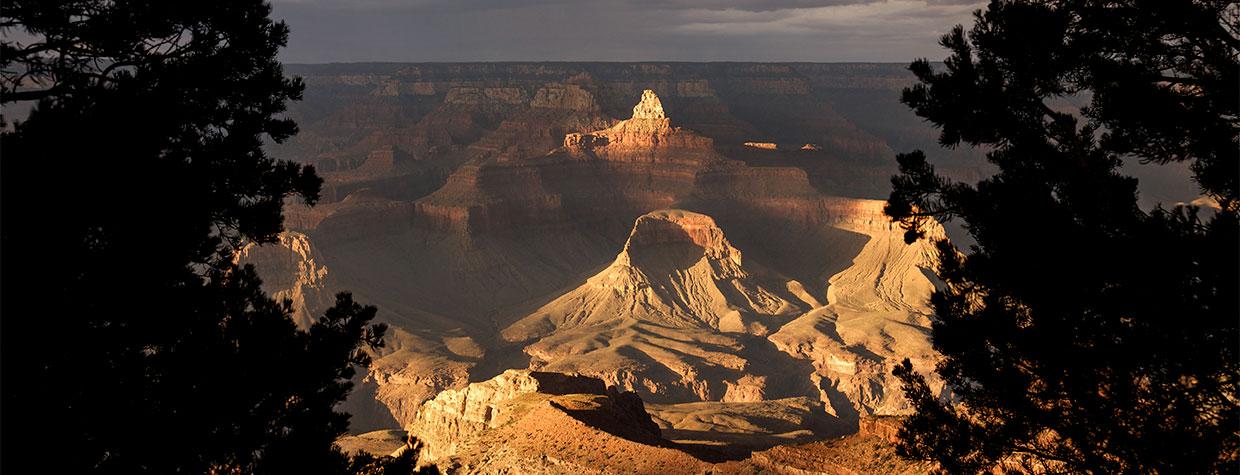Michelangelo is quoted as saying, “I saw the angel in the marble and carved until I set him free.” When I look out at the Grand Canyon’s many buttes, mesas and promontories stretched to the horizon, I sense that its creator (or the forces of erosion) worked with a similar purpose — wind and water replacing the sculptor’s chisel and hammer.
As a permanent resident of Grand Canyon National Park for more than 25 years, and an avid landscape photographer, I spent countless hours gazing at the Canyon, trying to make order out of seeming chaos. Like many other photographers before me, I became partial to a number of the stony monoliths. As it turned out, those that most often anchored my best photographic compositions were given the curious moniker “Temple.”
U.S. Army officer, cartographer, geologist and philosopher Clarence Dutton instigated this naming convention on a mapping survey in the 1870s. A worldly man, he noted that the most impressive formations were reminiscent of the ancient religious pagodas found throughout Asia. Greek and Roman mythological figures were also referenced for their epic symbology.
Between Dutton and the subsequent surveyors (George Wharton James, François Matthes, Henry Garnett and others), this naming tradition lasted into the early 1900s. Over the years, 23 individual peaks were officially designated as “temples.” Their evocative names include Buddha, Vishnu, Shiva, Deva, Brahma, Isis, Zoroaster, Thor and Apollo, to name a few.
As a longtime park resident and educator, I had numerous opportunities to share the names of these iconic mountains with overseas visitors, many of whom worship the deities honored by the place names in the Canyon. They were uniformly intrigued by the religious nomenclature. Given the Grand Canyon’s distinction as a UNESCO World Heritage Site, this inclusive suite of names seems most appropriate.
Each individual temple has its own geological, ecological, historical, aesthetic and often archaeological story to tell. Were any one to be relocated to the table-flat plains of our continent, it would likely be declared a national monument. However, in the cliff-slope belly of the Canyon, these towering titans often blend into the crowd.
Landscape photographers make great sport of catching the temples in wide-ranging lighting and weather conditions. Snow, fog, smoke, rainbows, lightning ... each teases out different personalities in the peaks. With unfettered access to this exceptional landscape, I was able to artistically stalk the peaks from every angle on countless forays along both the South and North Rims, as well as below the rim on foot or by boat.
I now call Phoenix home. And when I close my eyes and conjure the world’s most famous chasm, the mental vistas are peppered with the temples within.

